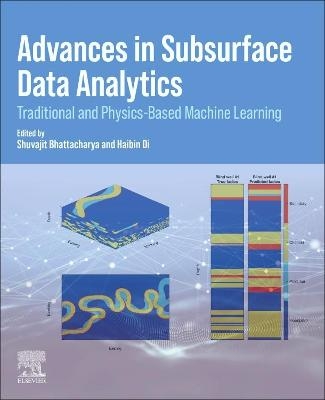
Advances in Subsurface Data Analytics
Elsevier Science Publishing Co Inc (Verlag)
978-0-12-822295-9 (ISBN)
Dr. Shuvajit Bhattacharya is a research associate at the Bureau of Economic Geology, the University of Texas at Austin. He is an applied geophysicist/petrophysicist specializing in seismic interpretation, petrophysical modeling, machine learning, and integrated subsurface characterization. Prior to joining the Bureau of Economic Geology, Dr. Bhattacharya worked as an Assistant Professor at the University of Alaska Anchorage. He has completed several projects in the USA, Netherlands, Australia, South Africa, and India. He has published and presented more than 70 technical articles in journals, books, and conferences. His current research focuses on energy resources exploration, development, and subsurface storage of carbon and hydrogen. He completed his Ph.D. at West Virginia University in 2016. Dr. Haibin Di is a Senior Data Scientist in the Digital Subsurface Intelligence team at Schlumberger. His research interest is in implementing machine learning algorithms, particularly deep neural networks, into multiple seismic applications, including stratigraphy interpretation, property estimation, denoising, and seismic-well tie. He has published more than 70 papers in seismic interpretation and holds seven patents on machine learning-assisted subsurface data analysis. Dr. Di received his Ph.D. in Geology from West Virginia University in 2016, worked as a postdoctoral researcher at Georgia Institute of Technology in 2016-2018, and joined Schlumberger in 2018.
Part 1: Traditional Machine Learning Approaches 1. User Vs. Machine Seismic Attribute Selection for Unsupervised Machine Learning Techniques: Does Human Insight Provide Better Results Than Statistically Chosen Attributes? 2. Relative Performance of Support Vector Machine, Decision Trees, and Random Forest Classifiers for Predicting Production Success in US unconventional Shale Plays
Part 2: Deep Learning Approaches 3. Recurrent Neural Network: application in facies classification
4. Recurrent Neural Network for Seismic Reservoir Characterization 5. Application of Convolutional Neural Networks for the Classification of Siliciclastic Core Photographs 6. Convolutional Neural Networks for Fault Interpretation – Case Study Examples around the World
Part 3: Physics-based Machine Learning Approaches 7. Scientific Machine Learning for Improved Seismic Simulation and Inversion 8. Prediction of Acoustic Velocities using Machine Learning 9. Regularized Elastic Full Waveform Inversion using Deep Learning 10. A Holistic Approach to Computing First-arrival Traveltimes using Neural Networks
Part 4: New Directions 11. Application of Artificial Intelligence to Computational Fluid Dynamics
| Erscheinungsdatum | 09.03.2022 |
|---|---|
| Sprache | englisch |
| Maße | 191 x 235 mm |
| Gewicht | 770 g |
| Themenwelt | Informatik ► Theorie / Studium ► Künstliche Intelligenz / Robotik |
| Naturwissenschaften ► Geowissenschaften ► Geologie | |
| ISBN-10 | 0-12-822295-6 / 0128222956 |
| ISBN-13 | 978-0-12-822295-9 / 9780128222959 |
| Zustand | Neuware |
| Informationen gemäß Produktsicherheitsverordnung (GPSR) | |
| Haben Sie eine Frage zum Produkt? |
aus dem Bereich


